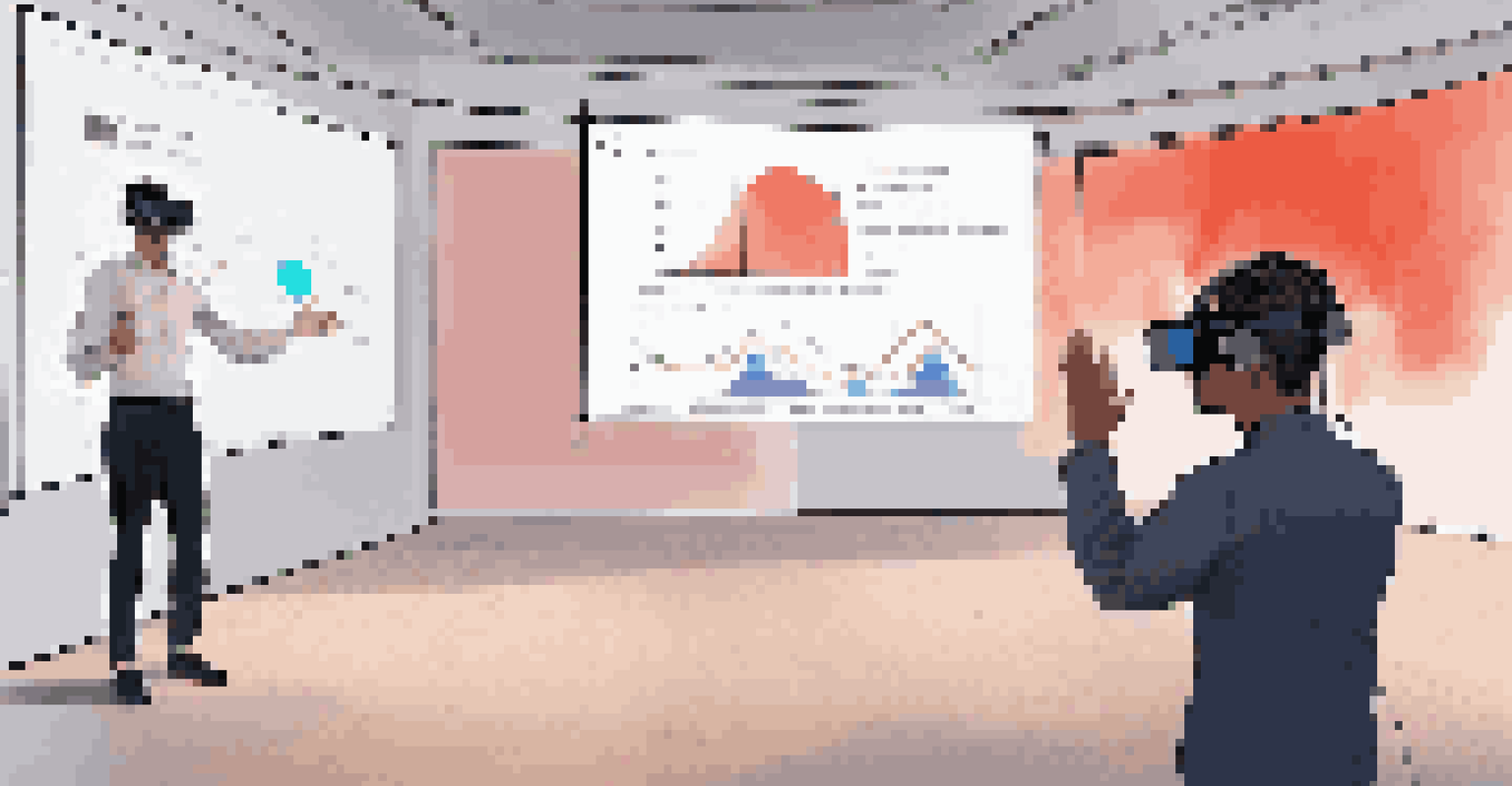Improving Public Speaking Skills Through Virtual Reality Training

Understanding the Power of Public Speaking
Public speaking is a vital skill that influences various aspects of life, from career advancement to personal growth. It's not just about delivering a speech; it involves connecting with your audience and conveying your message effectively. Many people grapple with anxiety and self-doubt when it comes to speaking in front of others, which can hinder their potential.
Public speaking is the art of diluting a two-minute idea with a two-hour vocabulary.
Improving your public speaking skills can lead to greater confidence and opportunities. Think of it as a muscle that requires regular exercise to strengthen. With the right tools and practice, anyone can become an effective speaker, transforming fear into a powerful asset.
In today's digital age, innovative solutions like virtual reality (VR) are emerging to help individuals hone their public speaking abilities. By immersing oneself in a realistic speaking environment, VR offers a unique way to practice and perfect this essential skill.
What is Virtual Reality Training?
Virtual reality training involves using technology to create a simulated environment that replicates real-life scenarios. In the context of public speaking, it allows individuals to practice delivering speeches in front of a virtual audience, complete with realistic reactions and feedback. This immersive experience can significantly enhance learning compared to traditional methods.

Imagine standing on a stage, facing an audience that reacts to your every word. With VR, you can practice your presentation multiple times, refining your delivery and adjusting to the audience's responses. This hands-on approach helps build familiarity and reduces anxiety, making it easier to perform in real life.
VR Training Reduces Public Speaking Anxiety
Virtual reality allows individuals to practice their public speaking skills in a safe environment, significantly reducing anxiety and building confidence.
Moreover, VR training can be tailored to suit individual needs, whether you're preparing for a small meeting or a large conference. This flexibility makes it an effective tool for speakers at any level, from beginners to seasoned professionals looking to polish their skills.
Benefits of Using VR for Public Speaking Practice
One of the most significant benefits of VR training is its ability to reduce anxiety. By allowing individuals to practice in a safe and controlled environment, they can confront their fears without the pressure of a live audience. Over time, this exposure can help build confidence and ease nerves.
It usually takes me more than three weeks to prepare a good impromptu speech.
Additionally, VR provides immediate feedback, helping users to identify areas for improvement. For instance, you can analyze your body language, tone, and pacing through recorded sessions. This level of introspection is hard to achieve in traditional practice settings.
Finally, VR training can simulate various audience types and scenarios, from supportive friends to critical stakeholders. This versatility prepares speakers for any situation, ensuring they can adapt their style and approach to different audiences effectively.
How VR Training Enhances Engagement
Engagement is key to successful public speaking, and VR training can significantly enhance this aspect. By immersing yourself in a lifelike environment, you learn to read the audience's reactions and adjust your delivery accordingly. This skill is essential for keeping your listeners interested and invested in your message.
For example, if your virtual audience appears bored or distracted, you can practice techniques to regain their attention, such as varying your tone or incorporating storytelling. These strategies can make your presentations more dynamic and engaging.
Engagement Skills Enhanced with VR
By simulating real audience reactions, VR training helps speakers master engagement techniques such as body language and eye contact.
Moreover, practicing in VR can help speakers master the art of eye contact and body language, which are crucial for maintaining engagement. By learning to connect with an audience visually and physically, speakers can create a more memorable experience.
Real-Life Success Stories with VR Training
Many individuals have transformed their public speaking skills through VR training, resulting in personal and professional growth. For instance, a shy graduate used a VR platform to practice for job interviews and found not only increased confidence but also secured multiple job offers. This success story is just one of many that highlight the potential of VR in overcoming public speaking fears.
In another case, a business executive utilized VR to prepare for a major presentation to stakeholders. By rehearsing in a virtual setting, he was able to refine his pitch and deliver it with confidence, leading to a successful outcome and a promotion. These anecdotes illustrate how VR training can empower individuals from various backgrounds.
As more people share their success stories, the popularity of VR training for public speaking continues to grow. This innovative approach not only enhances skills but also opens doors to new opportunities, making it a valuable resource in today's competitive landscape.
Choosing the Right VR Training Program
With the increasing availability of VR training programs, selecting the right one can be overwhelming. Start by considering your specific needs and goals. Are you preparing for a specific event, or do you want to improve your overall speaking skills? Identifying these objectives will help narrow down your options.
Next, look for programs that offer a variety of scenarios and audience types, allowing you to practice in different contexts. Some platforms even provide personalized feedback and performance analytics, making it easier to track your progress over time.
Success Stories Show VR's Impact
Numerous individuals have successfully improved their public speaking abilities through VR training, leading to personal and professional growth.
Finally, consider user reviews and testimonials. Hearing from others who have benefited from the program can provide valuable insights and help you make an informed decision.
The Future of Public Speaking Training
As technology continues to evolve, the future of public speaking training looks promising. Virtual reality is just one of the many tools being integrated into training programs, with the potential for even more immersive experiences. Imagine incorporating AI-driven feedback systems or augmented reality to further enhance practice sessions.
The combination of these technologies could revolutionize how we approach public speaking, making it more accessible and effective for everyone. Greater accessibility means that people from all walks of life can improve their speaking skills, regardless of location or resources.

Ultimately, the future of public speaking training lies in leveraging technology to create more engaging, efficient, and accessible methods. As we embrace these advancements, we can look forward to a new generation of confident and skilled speakers.